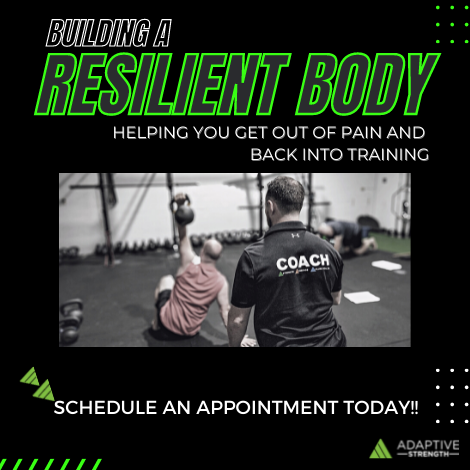I’m going to share with you a story that led to one of the most embarrassing days of my life, causing me to re-evaluate how I trained pull-ups. It happened about 13 years ago, when I decided to transfer from the Army to the Navy as a Clearance Diver. To be accepted, I had to first pass a selection course. This meant living through a 14 day nightmare on very little sleep and lots of… fun and games, we’ll call them.
On the first day of the selection, we had to complete six pull-ups to pass the strength portion of the fitness test. At the time, I weighed 90kgs and found it incredibly challenging. I’d never done a set of more than five pull-ups before. To be honest with you, I absolutely hated the exercise and avoided doing them like the plague (which was a pretty good sign that they needed some work).
The Petty Officer training instructor called my name first… and I felt my blood run cold. I had absolutely no idea whether I could hit six pull-ups, but I had no choice to get up on the bar and start pulling. To this day, I remember just how awkward and out of rhythm I felt. It was as if I was on a ship pulling against the roll of the ocean, and I was only just barely in control.
I got four reps out easily enough, but then the doubt really set in. I was able to complete my fifth rep, but it felt really awkward and heavy… and I still wasn’t done yet!
The sixth rep was (apparently) the ugliest and most disgraceful excuse for a pull-up that the Petty Officer had seen in a 20-year career, but luckily for me, it counted! Looking back, I think he let me off because of how hard I had grinded that final rep.
Had I not been able to get my chin over the bar at that moment, my life would have taken a very different turn. I was ecstatic at having met the requirements, but my triumph was soured a little. You see, the average score for the pull-up test that day was 16 reps.
So, I made myself a promise. The struggle and embarrassment I had felt during that pull-up test would never happen to me again. I’d treat pull-ups with the respect they deserved, and I’d include them in my training from that point on. Truth be told, I actually didn’t have much of a choice. To pass the diver training course, I had a year to triple the amount of pull-ups I could do at that time.
I want to share with you some of the types of sessions you can do, all of which have been very effective for me. I incorporated these into my own training, and was able to pass my diver training course as a result.
Session 1: Pyramid Training
Ladders are a great way to build volume slowly and also a fun way to train in a group. The goal is to work your way up from a single rep, all the way up to 90% of your current maximum, and then back down again. Take as much rest in-between sets as you need. I usually take up to 3 minutes on larger sets and 30 seconds on smaller sets.
If five reps is just shy of your max, your progression will be 1, 2, 3, 4, 5, 4, 3, 2, 1 for a total of 25 pull-ups.
If you can comfortably do 10 reps, your progression will be 1, 2, 3, 4, 5, 6, 7, 8, 9, 10, 9, 8, 7, 6, 5, 4, 3, 2, 1 for a total of 100 pull-ups.
For this type of session to be effective, you’re going to want your top set to be no less than five reps. Otherwise, the volume is going to be too low to achieve the optimum result.
If you can do 15+ reps, you’ll probably be better off jumping two reps at a time instead of just one.
Session 2: Low-Rep High Volume Training
For this session, you’ll need to figure out what 20% of your max is. If you can do 10 pull-ups in a maximum effort, then your number is 2 repetitions. Round the number up or down as necessary.
Your goal is to perform 20 sets using this number, trying to rest as little as possible. I like to set a timer on loop so I’m as consistent as possible, and I can also use the rest period as the training variable. If your pull-up speed begins to noticeably drop before you hit 20 sets, stop — you’re not trying to hit failure. Next time, see if you can do more sets. If you can do 20 sets, reduce the amount of time you’re resting between each set.
Session 3: Pull-Ups Ladders
Complete as many ladders with good form as possible in 30 mins. Take as little rest as possible between reps and 2-3 minutes between sets. Improve your score by taking less rest between sets and completing more full sets within the 30 min period.
A common beginning progression for this session looks like this:
1,2,3 rest, 1,2,3 rest, 1,2,3 rest, 1,2,3, rest, 1,2,3
Session 4: The Half Pyramid
This is half of a ladder session. Complete a set up pull-ups at around 90% of your maximum, and then work your way back down. For example, if your top set is 14 pull-ups, you’ll follow the progression of 14, 13, 12, 11, 10, 9, 8, 7, 6, 5, 4, 3, 2, 1 for a total of 105 pull-ups.
Rest as much as you need. I find myself taking up to five minutes at the start, and closer to two minutes towards the end.
Putting It All Together
You can see how each of these sessions will have you doing a large volume of pull-ups, even if you can only max out at five or so right now. Here’s a sample six week plan that combines all of the above sessions. Make sure you figure out what your maximum is prior to starting, as you’ll be basing the volume of each session on that.
| Day 1 | Day 2 | Day 3 | |
|---|---|---|---|
| Week 1 | Session 1 | Rest | Session 2 |
| Week 2 | Session 1 | Rest | Session 3 |
| Week 3 | Session 4 | Session 2 | Session 3 |
| Week 4 | Session 2 | Rest | Session 1 |
| Week 5 | Session 3 | Session 2 | Session 4 |
| Week 6 | Session 2 | Rest | Re-test |
I recommend you have at least one days rest between these sessions or your body will not recover in time for the next session. At the end of the six weeks, see how many pull-ups you can do in a single set — I think you’ll be pleased with the results!
Learn To Love Your Pull-Ups
In my own case, I can now do 30 strict pull-ups at a body weight of 105kg, or 26 with a 10kg kettlebell hanging from my waist. Back when I was struggling to do 6 pull-ups at 90kg, this would have sounded completely impossible to me.
I know a lot of you hate pull-ups (I definitely used to!). With a bit of time and a slight change of your mindset, you can achieve some pretty amazing things by following the process I’ve outlined in this article.







